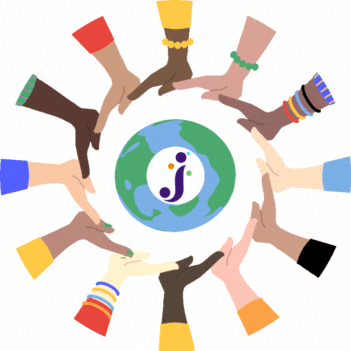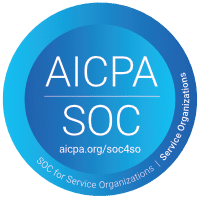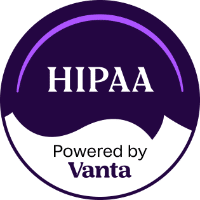In this article:
High-quality interpreting is widely-recognized to be the most accurate and effective tool for eliminating language barriers in a live interaction, regardless of the scenario. Unlike translation, which is intended for written documents only, the real-time verbal communication that characterizes interpretation allows people to bridge language and culture gaps on a much more natural and personal level, incorporating components of language like idioms, cultural references, and humor, as well as non-verbal communication cues like body language.
Fortunately, Over-the-Phone Interpreting and Video Remote Interpreting companies have made interpreting services easier to access than ever before. By connecting interpreters to those in need of language assistance around the world remotely, over audio or video, OPI and VRI allow interpretation services to be provided at a fraction of the cost and time associated with traditional onsite interpretation.
On the one hand, OPI and VRI have provided a huge benefit for businesses, organizations, and healthcare providers that use interpretation to serve non-English speaking clients and patients. Both modalities are more cost-effective and more operationally-efficient than onsite interpretation. Unfortunately, the remote nature of these services has also allowed many telephonic and video remote interpreting companies to cut corners on quality standards in order to increase profit margins.
Here, we explore some common business practices that telephonic and video remote interpreting companies use to increase their profit margins and the ways these practices can negatively impact service quality. We also uncover the components of a high-quality interpreting service, so that buyers and users of interpreting solutions can make informed decisions that prioritize quality when selecting an LSP partner for VRI and OPI, especially in high-stakes scenarios like healthcare or legal services.

First, let’s look at how quality can make the difference between successful communication where all parties’ goals are met, and inefficient communication that is plagued by misunderstanding, distrust, or worse.
Why It Matters: Quality Makes the Difference
Language and communication are complex. Even between two people who speak the same language, miscommunications and misunderstandings that leave one or both parties dissatisfied or insecure are common. Given these complexities, it should come as no surprise that interpretation is a highly complex task requiring not only native-level proficiency in two languages, but also unique skills formalized through professional training.
Professional interpreters must be able to quickly process and accurately convey ideas between two languages, while simultaneously monitoring the flow of conversation and making sure that both parties involved are engaged and on the same page. In addition, they bring to bear a wide array of soft skills in their practice, such as active listening, cultural sensitivity, and emotional awareness, in order to ensure that the message and intent of each speaker is accurately conveyed. These skills are even more critical in contexts such as healthcare and refugee support where the scenario can be emotionally-charged.

In the face of a language barrier, the absence of a high-quality interpreting service can have a wide range of consequences. From inefficient communication that is costly and time-consuming, to dangerous and life-threatening disparities in health equity for patients with Limited English Proficiency (LEP), an absence of quality poses risk to all parties involved in the interaction.
Fortunately, there are many modern business practices that telephonic and video remote interpreting companies uphold in order to ensure quality when delivering remote interpreting services. Buyers who know what to look for when choosing their LSP can take steps to reduce and eliminate these consequences altogether.
What to Look for in Phone & Video Remote Interpreting Companies
1.) Sets the Bar High for Talent Recruitment
The most important driver of LSP service quality is the caliber of the interpreters themselves. High-quality telephonic or video remote interpreting companies draw from a large network of highly-qualified, experienced, and certified interpreters that it has qualified firsthand. The LSP sets the bar high for the interpreters it invites to be part of its network by requiring significant experience in their area of expertise (e.g. medical interpreting), industry-recognized certifications in their language pair (if available) including HIPAA for medical interpreters, and a background check.
There are two common practices relating to interpreter recruitment that LSPs engage in to grow their profit margin for remote interpreting services:
- Lowering interpreter recruitment criteria for experience and certification as a way of keeping interpreter pay low. More experienced and qualified interpreters simply won’t accept low pay, leaving the LSP’s clients paying industry-standard rates for sub-standard service.
- Outsourcing primary qualification and assessment functions to third parties to avoid the costs of developing these functions in-house. Many LSPs utilize third-party testing agencies to verify interpreter skills and language proficiency. LSPs treat this service as a commodity, seeking to keep costs low at the expense of the assessment’s quality. This unfortunate practice is detrimental to the industry at-large, as many interpreters end up with credentials that were awarded without due merit or consideration.
Setting the bar high for the interpreters from the moment they are recruited to join the LSP’s remote interpreting network, and engaging in firsthand qualification of interpreters, helps LSPs ensure quality all the way downstream to the client.
2.) Has A Direct Relationship With Interpreters
High-quality telephonic or video remote interpreting companies should have a direct relationship with their interpreters, which entails several key practices. First, the LSP assesses and qualifies the interpreters in-house, as opposed to these functions being outsourced to a third-party agency. Second, the LSP verifies interpreter identity and ability to work through background checks wherever possible–including if the interpreter is located abroad–without passing this cost along to clients. Third, and most importantly, the LSP satisfies client needs using only its in-house network of qualified and verified interpreters.

In the industry today, the majority of telephonic and video remote interpreting companies operate with an antiquated workforce model that involves committing a percentage of their in-house interpreters to a mandatory 8-hour workday, while outsourcing the rest to competitors and middlemen resellers. This model causes service quality to suffer in two important ways:
- Higher-qualified, more experienced remote interpreters avoid working for LSPs that use this model because a) the hours are inflexible, and b) they earn less, due to middlemen agencies siphoning off a percentage of the LSP’s profit.
- The practice of buying/reselling interpreter labor from/to other LSPs ultimately means that LSPs which use this model are unable to uphold a rigorous quality assurance protocol. This is because a) they are providing services through interpreters they are not directly contracted with and therefore have not qualified firsthand; and b) their internal quality assurance controls/measures do not extend to interpreters sourced through third parties.
A direct relationship with interpreters enables the LSP to qualify its interpreters for their experience and credentials firsthand, implement routine quality control across all interpreters in its network, and react swiftly to quality issues involving interpreters.
3.) Treats Interpreters as an Asset, Not an Expenditure

In addition to setting the bar high for interpreters to join the platform, a high-quality interpreting service demonstrates to its interpreters that they are valued members of the network. This means going above and beyond to offer and encourage opportunities for interpreters to grow professionally through resources and materials that help them to develop and hone their craft. It means recognizing and rewarding interpreters when they provide exceptional service. It means providing interpreters instant feedback on each client interaction so they can learn and grow their craft.
Most importantly, it means paying a fair rate to interpreters for professional services rendered. One of the primary ways that telephonic and video remote interpreting companies seek to increase their profit margins on OPI and VRI is by squeezing interpreter pay as low as legally possible, in some cases paying as low as $0.06/per minute (roughly ~$4/hr). This is especially common among those LSPs that participate in the interpreter resale market, as the cost of middlemen resellers cuts into their profit margins. Many of these LSPs justify this practice by making reference to the cost of living in the countries where their overseas talent live–a harmful and exploitative practice.
LSPs that treat their interpreters as an asset instead of as a business expenditure attract the highest quality interpreters to their platform. Moreover, they experience greater interpreter loyalty, as opposed to the high turnover that pervades the industry, and a higher level of customer service towards the LSP’s clients.
Buyer Beware: Quality Starts with Buyers
In conclusion, high-quality interpreting is a by-product of an LSP’s investment in the right resources, commitment to creating equitable working conditions for interpreters, and rigorous quality assurance protocols that cover all aspects of service delivery starting with the interpreters themselves.
Knowledge is power when it comes to choosing an LSP partner for remote interpreting services. Buyers and users of these services need to be vigilant when selecting and vetting a vendor by asking the right questions about an LSP’s quality assurance measures and business practices. In this way, they can make informed decisions that will help guarantee the level of service they are making available to their clients and patients. In doing so, businesses, organizations, and healthcare providers that rely on interpreting can realize positive, real-world results of effective communication for the linguistically diverse constituencies they serve.














